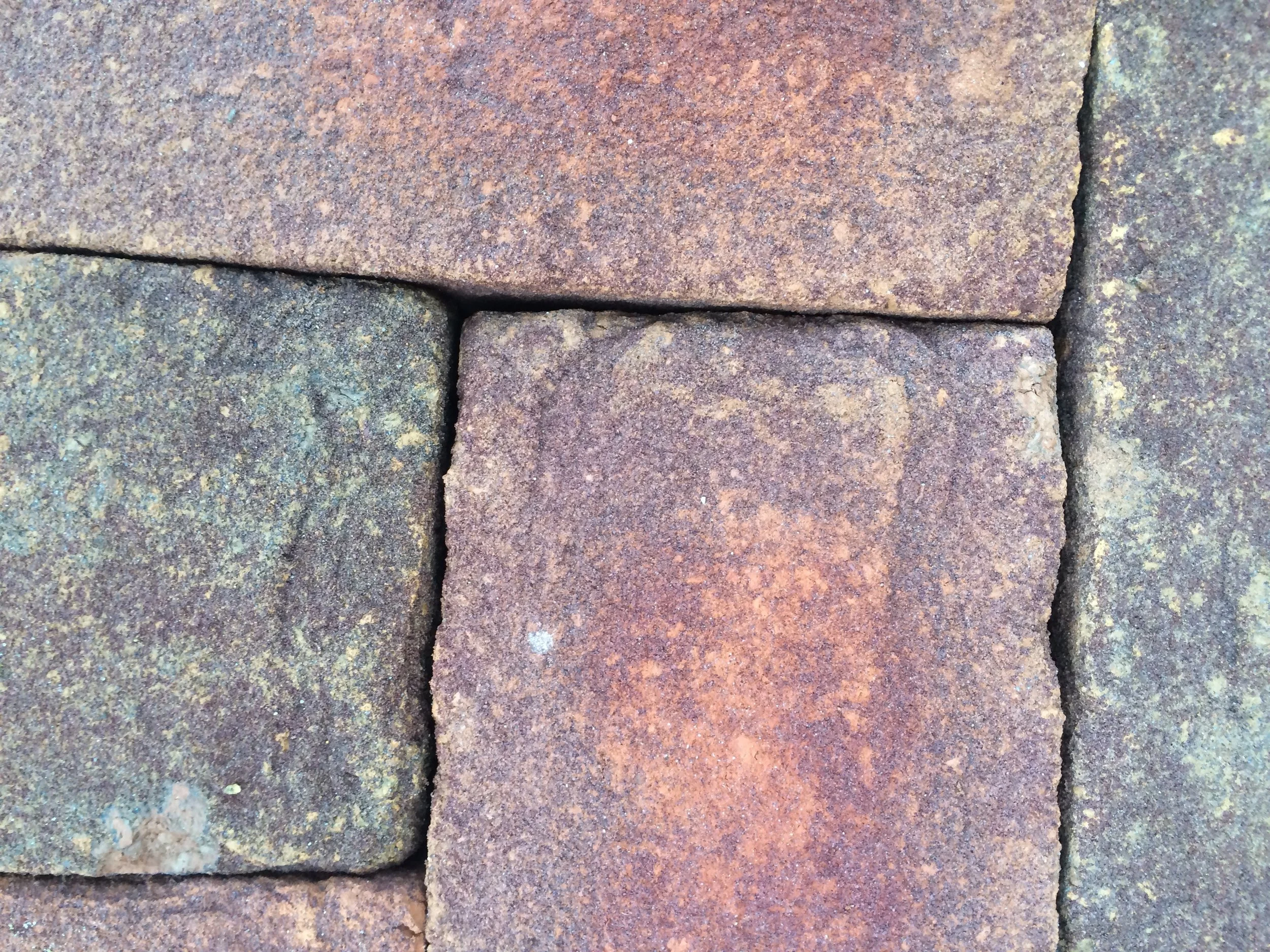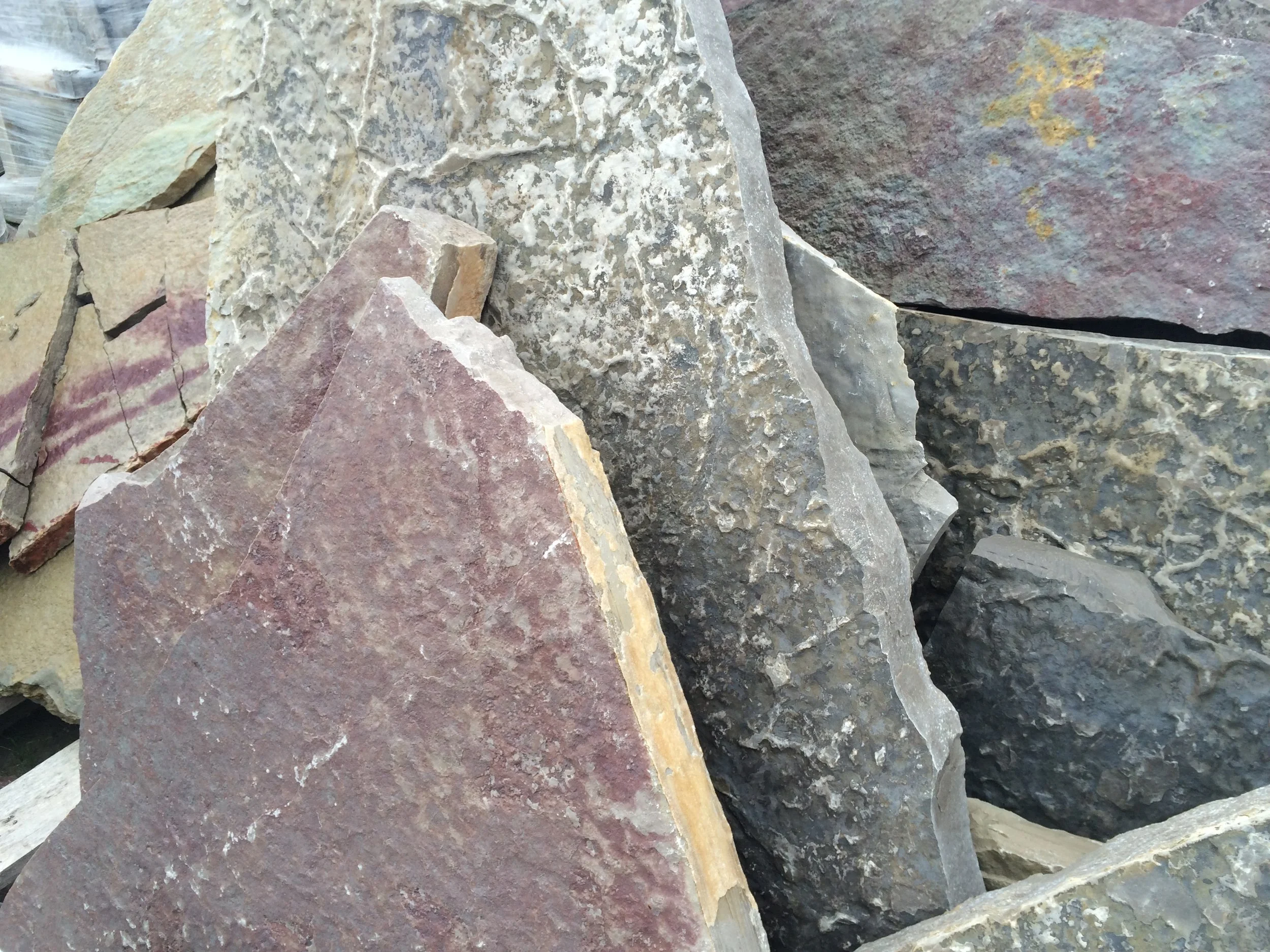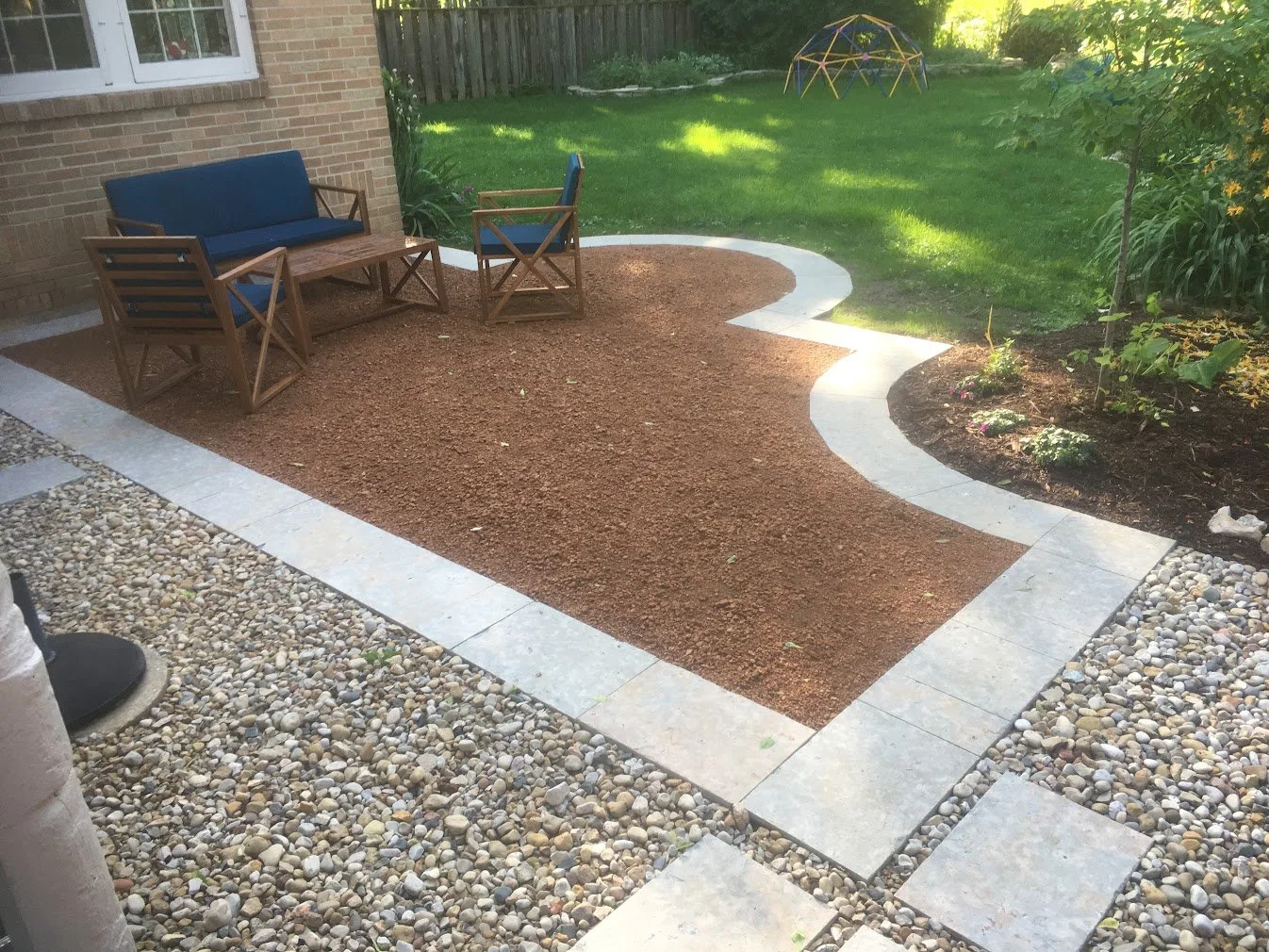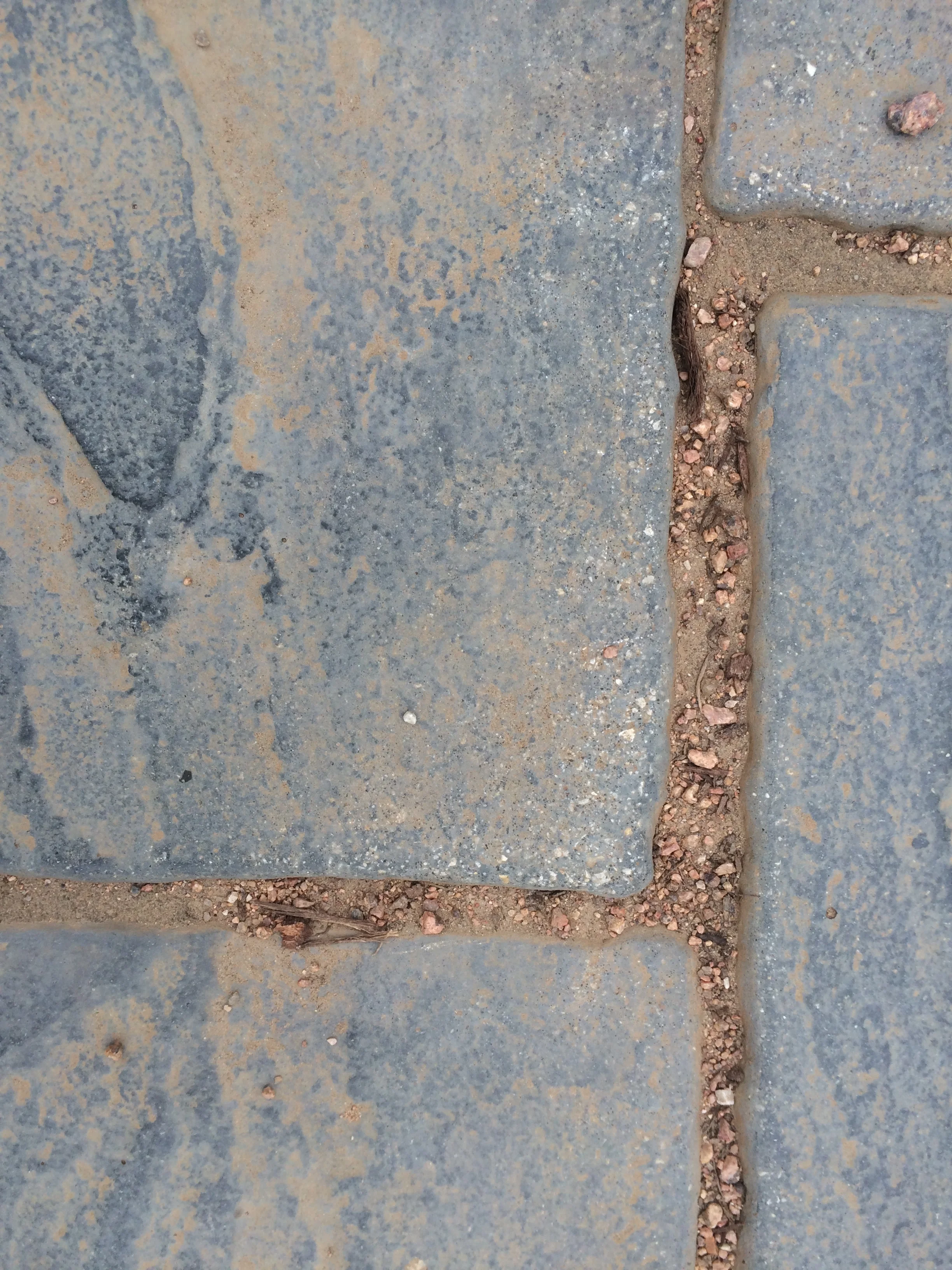Patio & Walkway Material Guide
Landscape contractors in Madison, WI generally use one of three material types when installing patios and walkways - brick, flagstone, and poured concrete. Some lesser-used alternatives are also available. We'll discuss the pros and cons of each as well as some installation methods and tips to make home landscapes more sustainable.
Sand-Molded Clay Brick Paver
Brick
Paving brick is a timeless choice for patio spaces. Clay brick generally has richer color, a variety of texture options, and a perfect look for older homes. Concrete brick are often suited for more modern looks or areas where a perfectly uniform look is desired. Although some concrete brick are top quality, beware of cheap concrete bricks as the color can fade and they can look “pebbley” and break down more quickly than other choices.
Generally brick is “dry-laid” in our climate - this means it is installed on a gravel base rather than a mortar bed. Rather than mortar between bricks, the joints are generally swept full of sand but can be filled with polymeric sand. This polymer/sand blend material promises to fill joints with minimum future maintenance. In our experience the product does not last as long as desired, can cause a haze on the patio surface, and generally doesn’t live up to the claims.
Brick can be laid in numerous patterns including herringbone, basketweave, and running bond types. Adding a border course - maybe even of a different color - can add interest.
Brick is easily repairable as units can easily be swapped out if damaged. Any areas of settling or heaving by tree roots are more easily dealt with with brick than other materials.
Irregular Calico Flagstone
Flagstone
Flat natural stone, suitable for patios & walkways is known as flagstone. It’s available in various colors from reddish, to white to grey to blue grey. Some varieties even have natural mineral deposits which add a “calico” coloration.
Flagstone can be geometric (generally rectangular) or irregular in outline. When installed, patterns can therefore very from formal and geometric, to very abstract and irregular.
Joints between stones can be filled with plants/ turf grass, compacted limestone screenings, other stone materials, or polymeric joint fillers.
Pricing can varies dramatically depending on the material type and the desired joint spacing. Irregular flagstone material installed with narrow joints, for example, requires significantly more cutting and leveling labor.
A patio made of flagstone has a natural beauty, but keep in mind that the material is a bit less regular so chair legs may rock a bit. If you utilize material with pitted or wave surface it may also be a challenge to keep cleared of snow in the winter.
Poured Concrete with Colored Stamped "Brick" Edge and Inlay. For Reference Only. Not AG&L Work
Poured Concrete
Poured concrete is a quickly installed solution and can fit any shape or size. Many finish and coloration options are available beyond the standard grey. Coloration and stamping with various textures can add interest and a more natural look. With appropriate base preparation and reinforcement concrete can last many years.
Keep in mind that concrete is prone to cracking. To reduce the impact of cracking, control joints must be cut through the pour. These joints can interrupt a stamped pattern and ruin the illusion of natural stone or brick patterning - no matter how convincing it otherwise might be.
When concrete is damaged or cracks somewhere other than a control joint it is difficult or impossible to replace seamlessly.
Concrete is generally the least expensive of the three main paving types (brick, flagstone, poured concrete) but pricing for stamped, colored concrete adds up quickly.
Alternative Patio & Walkway Materials
Loose Materials
Pebbles/ Gravel/ Recycled Glass/ Seashells. A thin layer of loose material atop the appropriate base can be a simple, cost-effective surfacing. Various types of gravel and pebbles are seen fairly frequently here. In coastal areas seashells are often used for driveways and informal patios. Tumbled recycled glass might even provide an option in the right setting.
Keep in mind that maintaining these surfaces is a bit of work. Keeping leaves and other organic matter from decaying in the area is important.
These materials also need an edge of a solid material to keep them contained.
Concrete “Patio Blocks”
These are often square and can be plain concrete or colored. Some are circular and may have an aggregate (pebbled) finish. Other options are more of a “faux flagstone” - either geometric or “irregular” patterns ( I say “irregular” because the shapes aren’t always polygons but the pattern repeats frequently.
These products can really look nice in the right setting. Some of the newer products look remarkably like the real thing.
One concern we have with some of the specialty paving products available today is that they may not be available tomorrow. Let's say you’ve made a large investment in a patio - what if you want to expand the area in the future, or create a similar space with the same material. What happens if your material is no longer avaiable? Worse yet, what if a few pieces break?
Be sure you have some extra material for potential breakage and think about potential future needs before purchasing a highly specialized material or something from the discontinued bin. Also realize that the finish on some of the "faux flagstone" type materials can be worn off by heavy foot traffic.
Sustainable Patio & Walkway Considerations
Pervious Paving Options
Many paving types can be designed to allow water to flow through and sink into the ground. Pervious concrete looks a bit like peanut brittle….The aggregate is coated with concrete slurry and pore spaces allow water to flow through. Other products, like pervious bricks, have wide spacers between the edges of the pavers which create a gap to allow water to infiltrate. Regardless of the surfacing, a different and more intensive base preparation is needed to accept and infiltrate this stormwater.
Recycled or Reused Paving Materials
Reusing materials like historic street cobbles, or even brick from a removed patio is beneficial. Tumbled glass can be an interesting surfacing as well. Consider factors like how much energy went into the delivery / trucking of the material when deciding if a material is truly sustainable.
Reusable Paving Materials
Think about the long term. In ten years, the new homeowners may have very different needs. Dry-laid Bricks - installed without mortar, are a material that can easily be lifted and reused somewhere else. Poured concrete is not easily reused and is often disposed of rather than broken down and reused as building aggregate.
Materials With Byproduct Content
Certain concrete pavers use fly-ash, an industrial byproduct in their manufacture. This process not only uses a waste product to create a product. it also uses much less energy than traditional brick…. A green landscape approach worth thinking about.
Creating A Defined Lawn Space Rather Than A Traditional Patio
Consider if a small, defined lawn area could provide the same function as a patio. After all, a patio is simply a gathering space that is relatively smooth/level and has defined edges. If a small lawn area were surrounded by plantings it might make a nice, low-cost space that also allows more infiltration of stormwater.
Ride Your Bike to the Union Terrace Instead of Building Your Own Patio
Okay, this one is kind of a joke but the reality is that even though we try to be environmentally-friendly with our projects, there's no doubt that biking to a place that already exists is far more sustainable than building something new. And you could have a lot of fun biking down to the terrace, having a beer, and meeting some friends. You could have many, many evenings of entertainment at the terrace and price-wise you'd come out way ahead.







